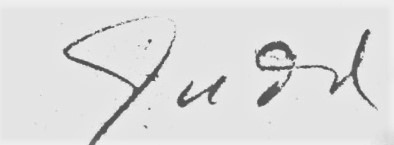Donald Judd
1928-1988
Any questions?
contact@mr-expert.com
Do you own a work by Donald Judd and would you like to know more about its value? Our Experts will carry out a free appraisal of your sculpture, to provide you with an estimate of the market price, then assist you to sell at the best price.
Status, Estimate and Price for the artist Donald Judd
Price of a sculpture: 34,000 – 5,000,000 €.
Estimation of a print: 776 – 60,000 €
Furniture estimate: 6,000 – 65,000 €.
Estimate of a drawing: 2 600 – 21,000 €.
If you would like to have a work by Donald Judd appraised, our experts will take care of everything.
Three-dimensionality: from uncertain beginnings to unanimous recognition.
Donald, known as Don, Judd is an American artist from Excelsior Springs, Missouri, known for his work alongside Sol LeWitt, Robert Morris and Dan Flavin in minimal art. He graduated in philosophy at Columbia and began his painting career in 1950, exhibiting for the first time at the Panoras Gallery in New York, which he himself described as a “stupid show”. Following this, Donald Judd studied art history and then wrote for specialized magazines such as Arts Magazine. Judd then became a spokesman for his time, defending the artists of his time and refining his concept of three-dimensionality. In 1965, he published Specific Objects, a manifesto of an art that asserts this model of three-dimensional representation, without concern for figuration or composition. This did not prevent him from continuing his production: in 1968, a first retrospective was organised by the Whitney Museum of American Art, and in the 1970s and 1980s he finished asserting himself thanks to the radicality of his art. More discreet in the 1990s, he continued his increasingly stripped-down work and in 1991 produced Untitled, which remains one of his best-known productions.
Donald Judd: working on space and the environment
The artist’s work is an art of space, marked by compositions, installations and sculptures that explore the three dimensions and use the key materials of minimalism: steel and concrete. Stack is a 1973 installation organised around stainless-steel paving stones and red Plexiglas. Judd’s production can also be read from an environmental perspective: the exhibition space is fully considered in the work of the artist who thinks a lot about the place of light in his installations, but also thinks about the environment as it influences the nature of his compositions. The American desert, in particular, could be at the origin of the stripping of works such as his Boxes. Donald Judd also thinks of his creation from a mathematical perspective: the Fibonacci suite, for example, organises several of his compositions.
Posterity of the artist’s work
The National Gallery of Ottawa held its first major exhibition in 1975. Four years later, Judd and the Dia Art Foundation acquired Fort D. A. Russell in Wyoming, a 1.4 square kilometre space in the heart of the Great Plains. Entrusted to the Chinati Foundation upon the artist’s death in 1994, this space became a place dedicated to his work, but also to that of many of his peers, including John Chamberlain and Dan Flavin.
Recognising Donald Judd’s signature
Like many artists, Donald Judd did not sign all of his works. However, you will find below an example of a signature in order to give you a first idea. Variations of this signature exist: do not hesitate to contact one of our experts to authenticate a signature in a formal way.

Appraising and selling a sculpture by Donald Judd
If you own a drawing or any other sculpture by Donald Judd, ask for a free estimate via our online form.
You will then be contacted by a member of our team of experts and auctioneers to give you an independent view of the market price of your painting. In the event of a sale, our specialists will also advise you on the various options available to sell your work at the best price.